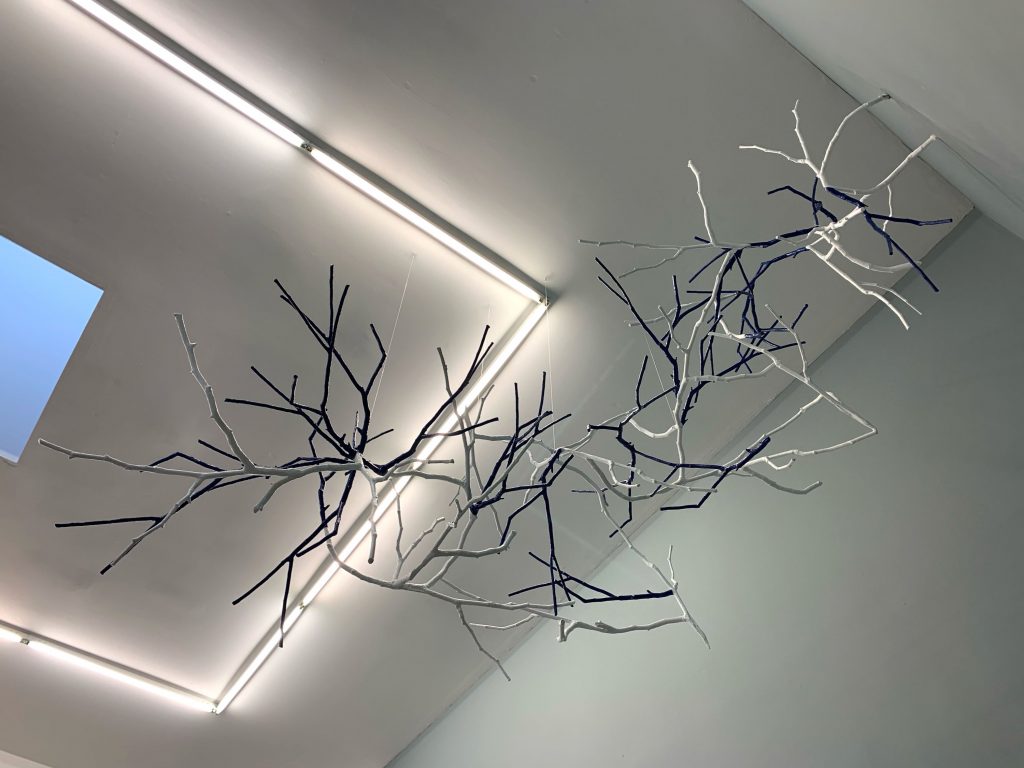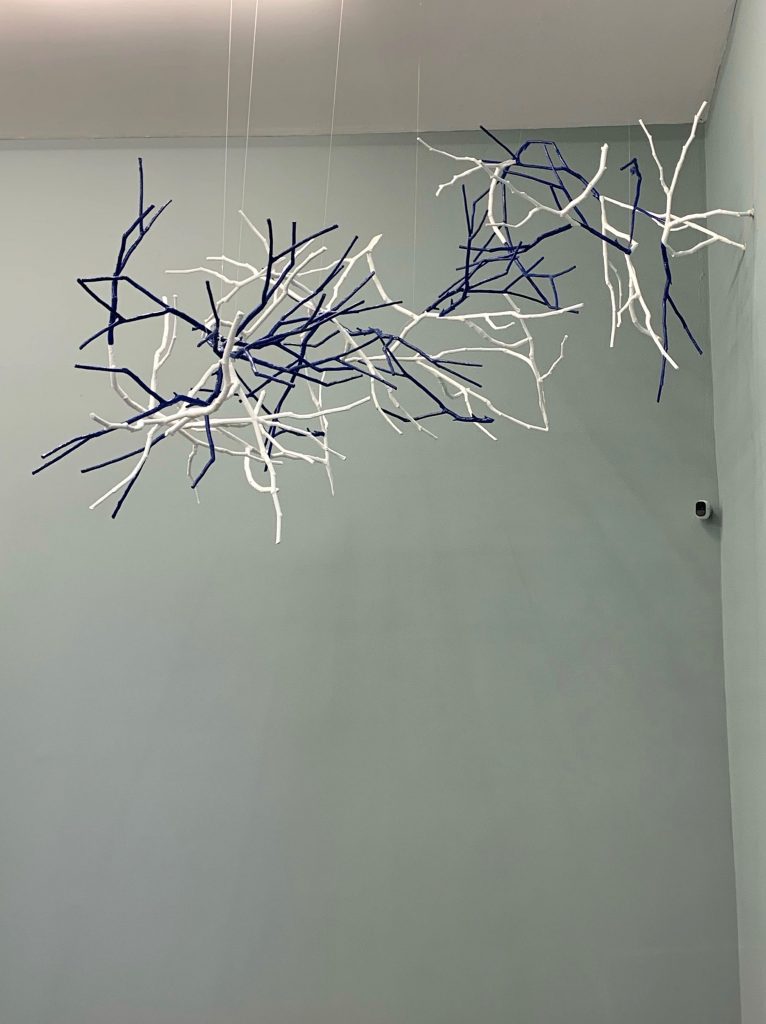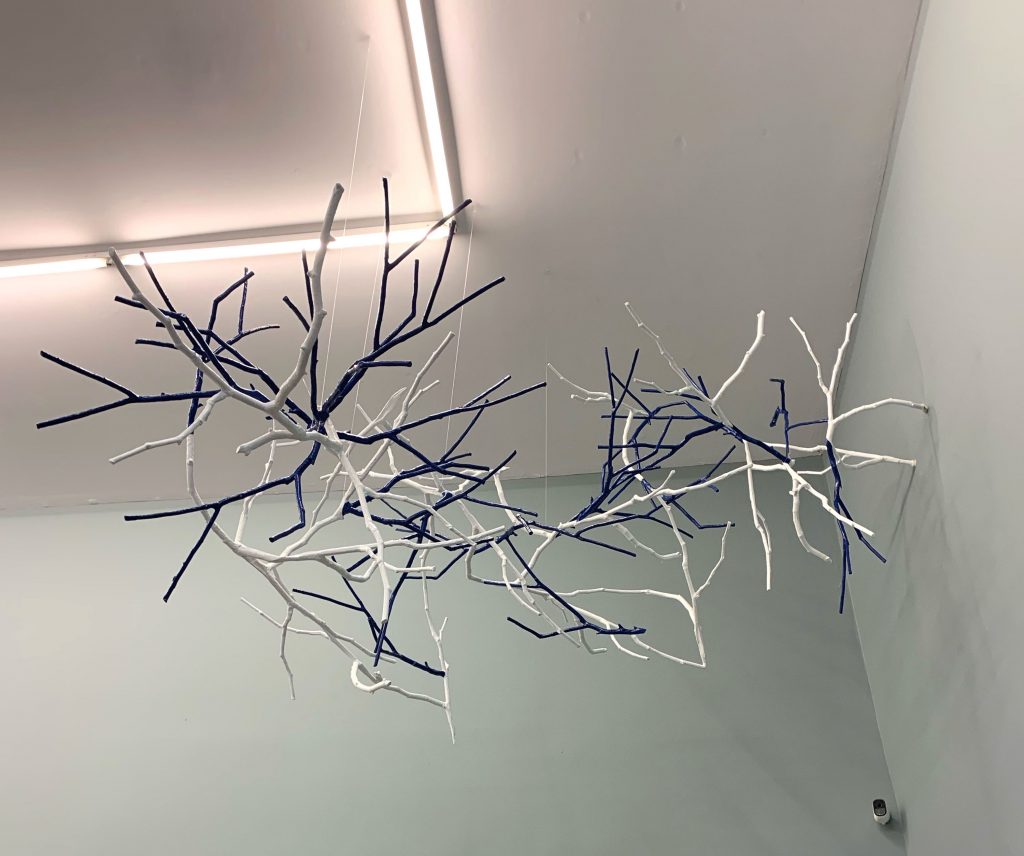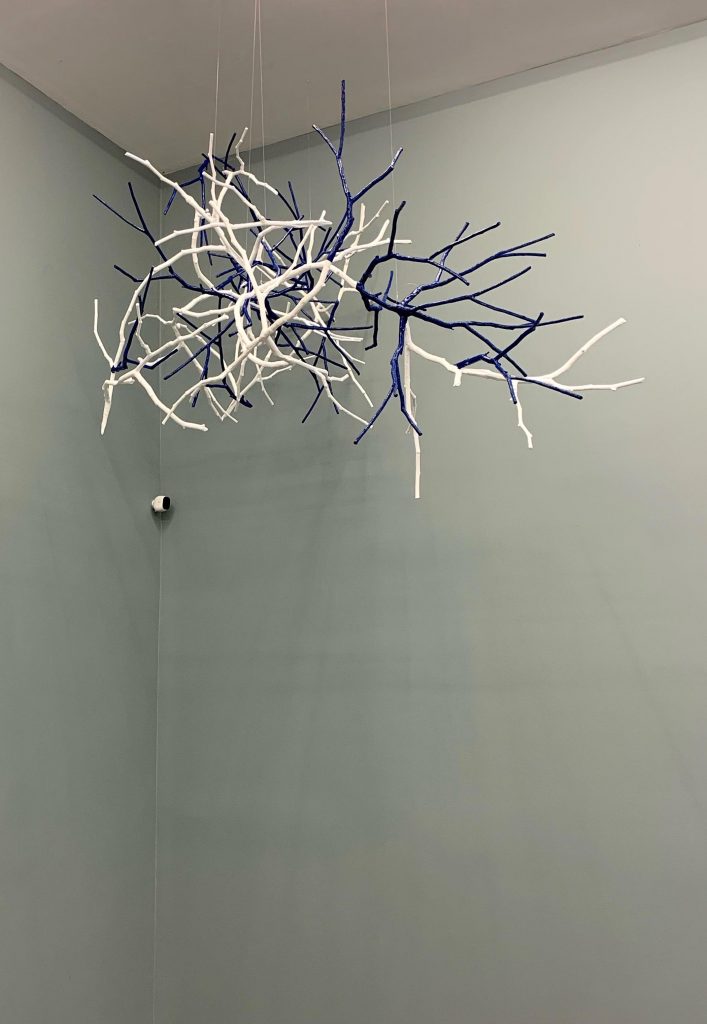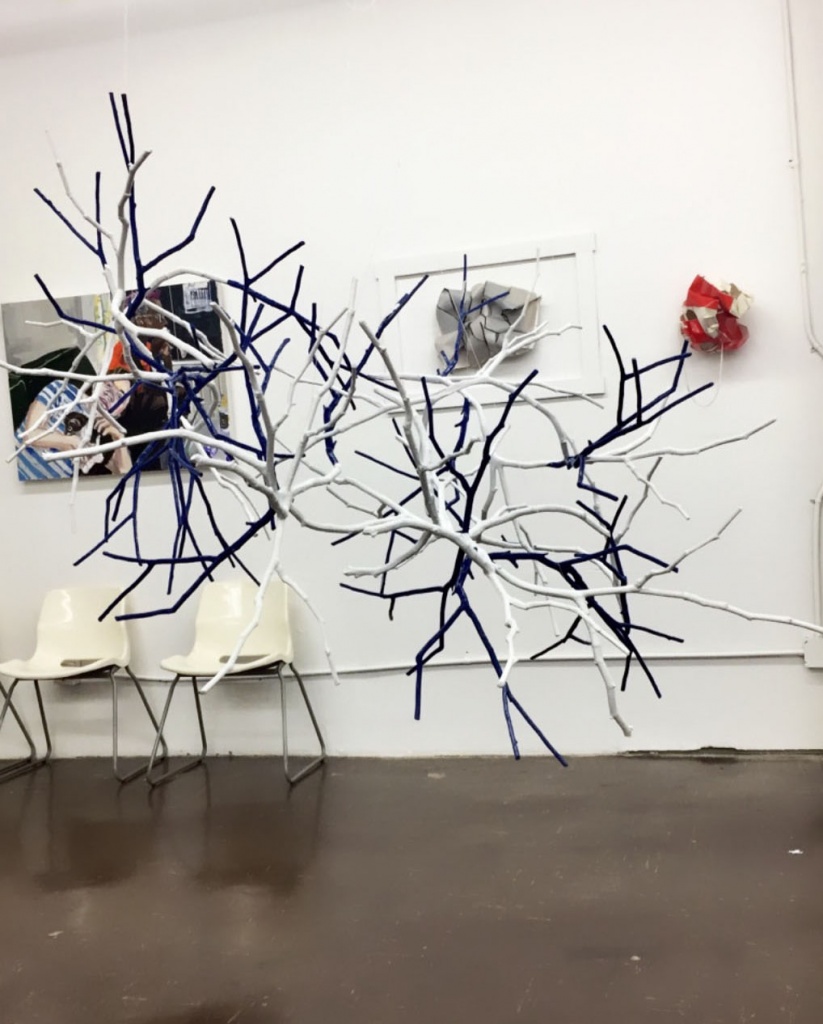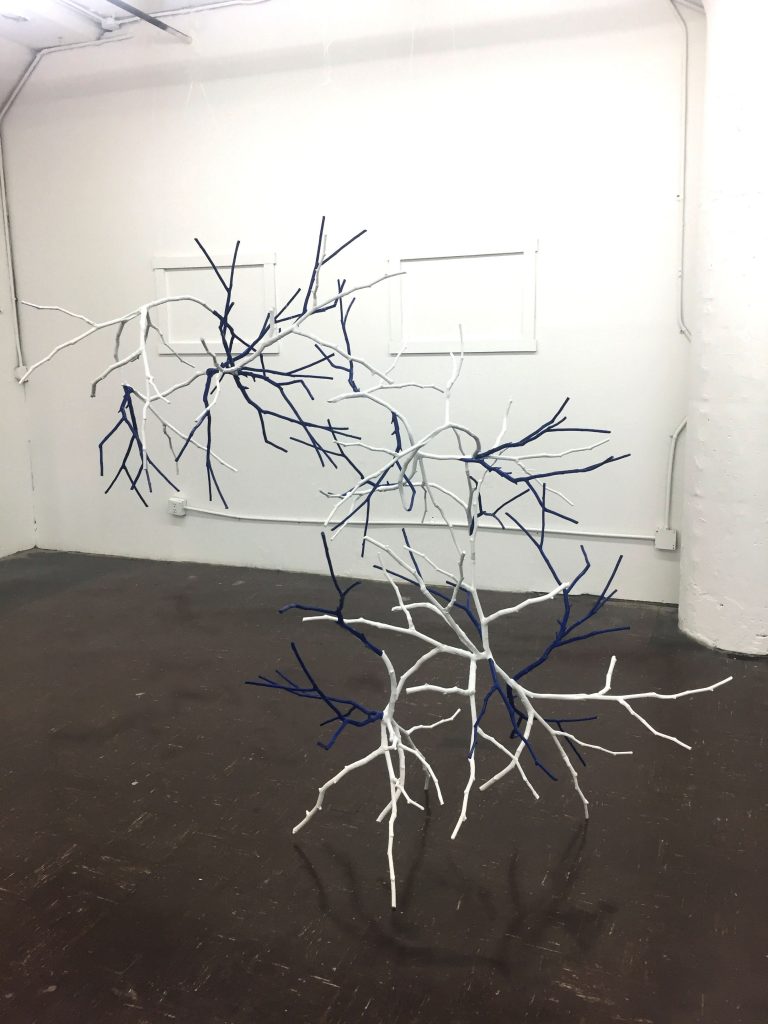Time Takes Time Out
Taking from a statement, perhaps over-quoted, “Man can never step twice into the same river” by Heraclitus (of 465 BC), describing the flux of the ever changing world, where nothing repeats itself in nature of the universe, this sculpture attempts to ask a question, “what would it look like if nature did repeat itself?” In tree branches (displaying fibonacci sequence most easily perceived) was a good place to start the experiment.
Duplicating two branches, each containing two twigs into a hundred pieces, by casting them, rearranging and welding them together to artificially create random order, mimics “mimesis”. The blue and white signify the river and the shimmering reflections of the sky, while the two colors also clue-in the viewer of the sculpture containing only two different pieces repeated.
And while it appears to be imitating nature, the same dimensions of the branches in a mass conceal which parts came first, as opposed to trees in nature, where the bottom branches are heavier and larger revealing their existence before the top branches, carrying the weight, parenting newer and smaller branches that bear smaller twigs and so on. This sculpture paradoxically wants to stop the direction of time (i.e. entropy and the second law of thermodynamics) by stagnant multiplication of the same branches, but by the fake disorderliness of the arrangements, it mimics entropy in its appearance.
While at some level, this work could evoke “random fractals” in its self-similarity pattern one finds in Brownian Tree (which happens at the same scale), it also flirts with the notion of the theory of entanglement in quantum physics, where subatomic particles can exist in two places at the same time without any cause or signal that connects the two (though, of course in this case, the particles/mass are physically connected)-which can lead to multiverse hypothesis: a topic that seems to have propagated outside of scientists’ arena for decades— Neils Bohr’s once stated that, science is not a study of nature but study of nature that is available to our observation. It makes me wonder if in fact there were duplication of nature around us that we just may not have the capacity to perceive, and if so, what purpose would they serve, if at all…
